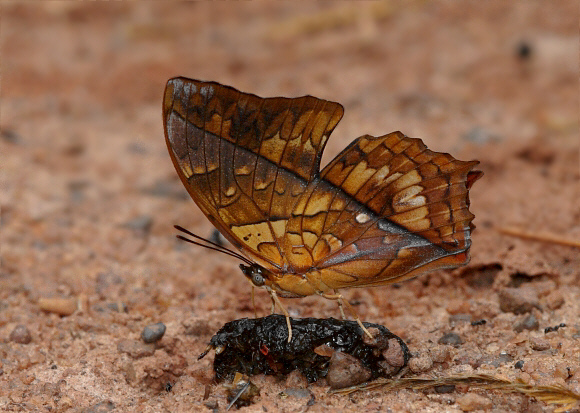
Introduction
The Charaxinae are a group of robust, medium to large Nymphalids characterised by having a rapid and powerful flight, stout bodies, falcate apexes, and a habit of feeding at dung and carrion. They are represented in the neotropics by genera including Consul, Memphis, Prepona and Agrias; in the Oriental and Australian regions by Polyura and Charaxes, and in Africa by Charaxes, Euxanthe and Palla.
There are 179 Charaxes species in the Afrotropical region, one of which – jasius, extends its range as far north as the Mediterranean coast of Europe. Most are forest-dwellers but several are adapted to savannah and arid Acacia thorn scrub habitats.
Most Charaxes species are black on the upperside, with bands of either white, orange or blue. The bands in some species are very broad, while in others they are narrow and broken into a series of small spots. Many Charaxes species have a pair of thin tails at the tornus of the hindwings.
Charaxes pleione and the very similar paphianus are bright fiery orange-red on the upper surface. On the underside paphianus is more subdued in colour. Both species are distributed throughout the African forest block which extends from Sierra Leone to Kenya.
Habitats
Charaxes pleione occurs in lowland forest at altitudes between sea level and about 1200m.
Lifecycle
As with other Charaxes species, the egg is barrel-shaped and carries a series of ridges and keels around the upper part. It is laid singly on leaves of the foodplant.
The caterpillar when fully grown is smooth-skinned, green, and has an oval spot on either side of each segment. The head is adorned with a pair of short recurved horns. It feeds on the foliage of Acacia ( Fabaceae ).
Adult behaviour
Males are usually encountered in two’s and three’s along sunny forest tracks. They habitually rest on the foliage of bushes, basking with wings held partly open. This species has a weaker flight than other Charaxes species, but males nevertheless can still move quite rapidly. Females have a more feeble, almost fluttery flight. Although the butterflies are sometimes attracted to carrion or dung, they are more often found visiting sap runs or fallen fruit.
